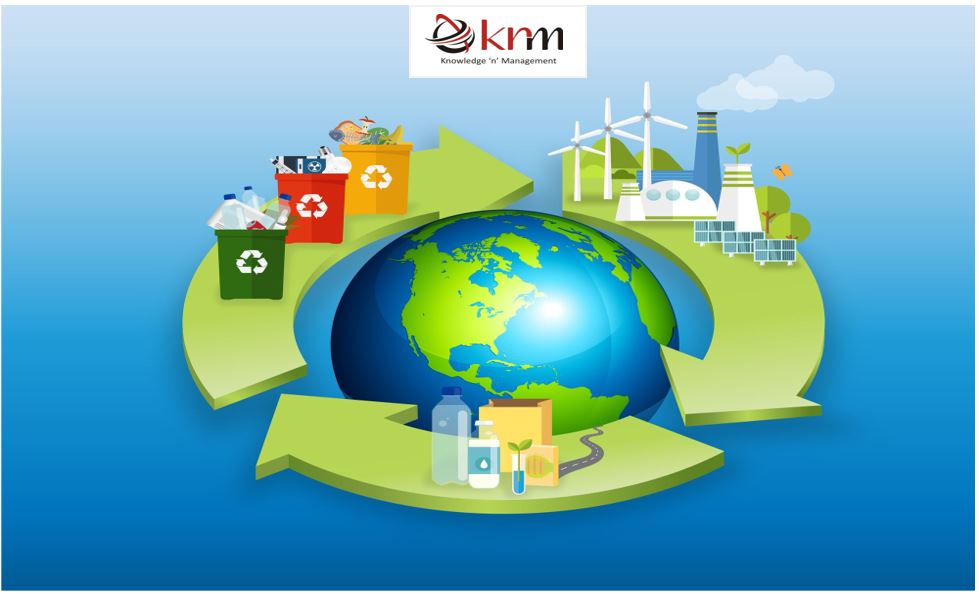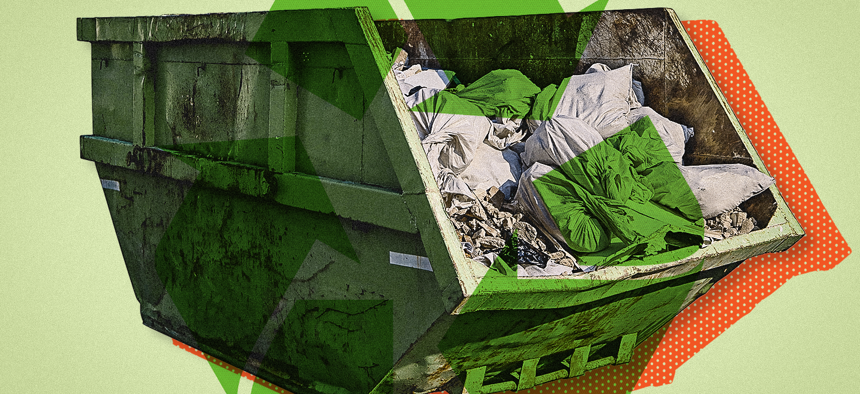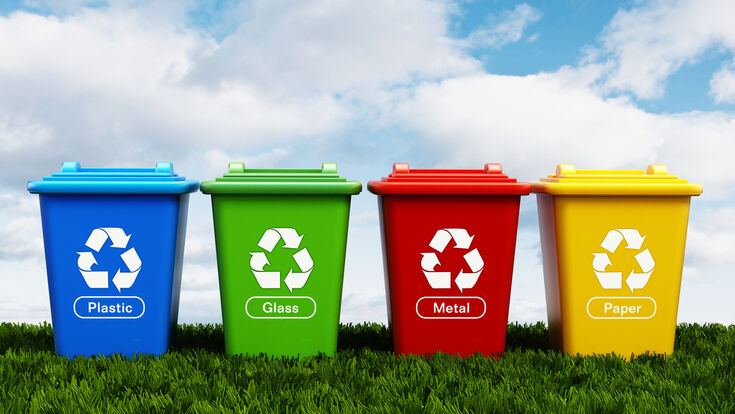Exactly How Recycling Lives Services Help Reduce Ecological Impacts
Exactly How Recycling Lives Services Help Reduce Ecological Impacts
Blog Article
Exploring Different Kinds Of Waste in Modern Waste Management Systems
The modern landscape of waste monitoring includes browsing a complex array of waste kinds, each calling for specialized handling and disposal techniques to mitigate environmental influences. Community solid waste, contaminated materials, electronic waste, and organic waste each existing distinctive obstacles and chances for resource recovery. Innovative remedies such as wise waste containers and waste-to-energy modern technologies are emerging as essential tools in improving performance and sustainability. Comprehending these waste kinds is necessary for promoting public awareness and encouraging active engagement in lasting practices. What methods can successfully address these diverse kinds of waste while advertising a round economy?
Local Strong Waste
Municipal solid waste, usually described as household garbage or trash, incorporates a selection of thrown out materials produced by household, industrial, and institutional sources within a town. This waste stream generally consists of things such as product packaging, food scraps, lawn trimmings, paper, plastics, fabrics, and discarded home items. The administration of municipal strong waste is an essential component of metropolitan preparation and public health and wellness, necessitating efficient collection, transport, and disposal systems.
Effective waste monitoring systems are made to reduce environmental effect while optimizing resource healing. This typically includes a combination of methods consisting of composting, landfilling, and recycling. Recycling programs target products like paper, glass, steels, and particular plastics, diverting them from land fills and reestablishing them right into the manufacturing cycle. Composting organic waste, such as food scraps and backyard trimmings, not only decreases landfill use yet likewise produces valuable dirt amendments.
Municipalities have to also resolve the financial and logistical difficulties related to waste management. Carrying out pay-as-you-throw systems, enhancing public awareness, and investing in technology can substantially boost waste diversion rates. By incorporating these methods, municipalities can promote lasting communities, decrease greenhouse gas discharges, and preserve all-natural sources.
Hazardous Waste

Effective contaminated materials management involves numerous crucial actions: identification, disposal, therapy, and segregation. Recognition entails the classification of waste based on its harmful homes. Segregation guarantees that dangerous materials are saved individually from non-hazardous waste to avoid cross-contamination. Treatment techniques, such as chemical neutralization, incineration, and stabilization, are used to lower the toxicity, volume, or flexibility of the waste. Finally, disposal alternatives, consisting of safe and secure land fills and underground storage space, are selected to guarantee lasting control.
Regulatory structures, such as the Source Conservation and Recovery Act (RCRA) in the USA, supply guidelines and criteria for hazardous waste management. Adherence to these laws, coupled with improvements in waste therapy innovations, is vital in minimizing the threats connected with harmful waste.
Electronic Waste
Digital waste, commonly described as e-waste, represents a quickly growing challenge in waste administration systems internationally. This kind of waste incorporates thrown out electronic tools and equipment such as mobile phones, computers, tvs, and various other electronic home appliances. The quick speed of technological development, paired with lowering item lifespans and consumer need for the most recent devices, has actually significantly boosted the quantity of e-waste generated every year.
E-waste is particularly troublesome because of its intricate make-up, commonly consisting of hazardous compounds like mercury, lead, and cadmium, which present considerable ecological and health and wellness dangers otherwise appropriately taken care of. Conversely, e-waste also has useful materials such as copper, silver, and gold, which can be recovered and recycled. The twin nature of e-waste-- both beneficial and dangerous-- requires specialized handling, reusing, and disposal procedures.
Effective e-waste administration involves strict regulative frameworks, robust collection systems, and advanced recycling innovations. Public awareness and engagement are crucial, as improper disposal practices, such as illegal dumping and informal recycling, worsen ecological contamination and health and wellness dangers. Consequently, improving e-waste administration techniques is essential for mitigating eco-friendly impact and recouping important sources in a progressively electronic world.

Organic Waste
Organic waste, making up kitchen area scraps, yard trimmings, and farming deposits, represents a significant section of the global waste stream. This sort of waste is naturally degradable, indicating it can be damaged down by microbes into easier organic substances. Despite its possibility for all-natural decomposition, improper monitoring of natural waste can lead to damaging environmental effects, consisting of the emission of greenhouse gases such as methane, which add to climate modification.
Reliable management of organic waste is important for decreasing these ecological impacts (recycling lives services). Composting is a widely taken on technique, transforming organic waste into nutrient-rich garden compost that can boost soil health and wellness and farming performance. In addition, anaerobic digestion is an arising technology that transforms organic waste right into biogas, a sustainable energy resource, and digestate, which can be utilized try this out as fertilizer
Municipalities and waste administration entities have to implement durable natural waste collection and treatment programs to make the most of the advantages of these procedures. Public education and learning projects can also play a pivotal role in encouraging families and organizations to different organic waste from various other sorts of waste. By focusing on the administration of natural waste, societies can reduce land fill usage, reduced greenhouse gas discharges, and develop important results for agricultural usage.

Ingenious Waste Administration
In the world of waste monitoring, ingenious techniques are changing how societies handle their refuse, going for sustainability and effectiveness. These innovations encompass a series of modern technologies and practices that enhance reusing rates, reduce land fill dependence, and lower environmental effect. One popular innovation is the execution of clever waste bins geared up with sensing units that monitor fill degrees and enhance collection paths. This not only lowers gas intake yet additionally minimizes greenhouse gas exhausts.
An additional noteworthy growth is the fostering of waste-to-energy (WtE) technologies. By converting non-recyclable waste right into usable power through processes such as incineration and anaerobic food digestion, WtE decreases landfill worry and gives a sustainable energy source. Innovations in chemical recycling permit for the breakdown of complex plastics into their original monomers, enabling the development of brand-new, high-quality plastic items.
Furthermore, the circular economic climate model is gaining grip, stressing the style of products and systems that prioritize reusability and resource effectiveness. This holistic method encourages markets to reduce waste generation from the start. With these innovative techniques, contemporary waste administration systems are not just attending to the immediate challenges of garbage disposal however likewise leading the way for a much more sustainable future.
Final Thought
A detailed understanding of metropolitan strong waste, hazardous waste, digital waste, and natural waste, combined with the execution of innovative waste administration options, is critical for reducing environmental effects. Integrating innovations such as smart waste containers and waste-to-energy systems can enhance effectiveness and sustainability. Reliable waste monitoring approaches not just foster source healing but Look At This additionally advertise public understanding and participation, inevitably contributing to the growth of a circular economic situation.
The modern landscape of waste management entails navigating a complicated selection of waste types, each calling for specialized handling and disposal approaches to alleviate ecological effects. Municipal solid waste, unsafe waste, digital waste, and natural waste each present unique difficulties and chances for source recuperation.Electronic waste, typically referred to as e-waste, stands for a rapidly growing difficulty in waste management systems globally. Via these cutting-edge techniques, contemporary waste administration systems are not just dealing with the instant difficulties of waste disposal yet additionally paving find here the way for an extra sustainable future.
An extensive understanding of local strong waste, unsafe waste, electronic waste, and natural waste, paired with the implementation of cutting-edge waste administration services, is necessary for alleviating environmental effects. (recycling lives services)
Report this page